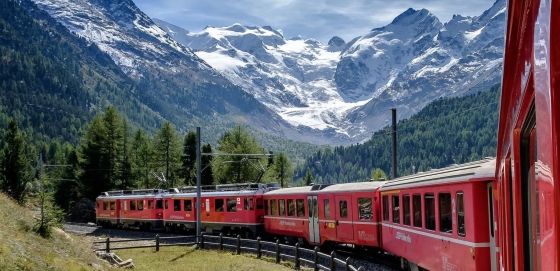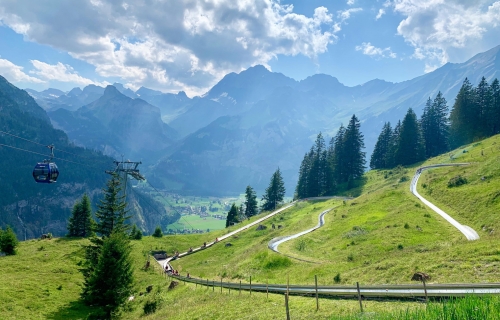Bivio Temperatures: Monthly Averages and Year-Round Insights
On this page, we’ll explore temperature statistics for Bivio in Grisons, Switzerland, including day and night variations and monthly averages. We’ll also compare the annual temperature to other cities in Switzerland.
Monthly Temperature Averages
Visitors to Bivio will encounter a climate influenced by big temperature differences across the year. Typically, maximum daytime temperatures range from a mild 17°C in July to a very cold -5°C in the coolest month, January. Nights are cooler, with temperatures generally dropping to -14°C, particularly during the colder months.
The chart below illustrates the average maximum day and minimum night temperatures in Bivio by month:
The early hours of 4 AM to 6 AM often see the lowest temperatures, while 3 PM marks the peak of the day’s heat as the sun’s impact is strongest. July, the city’s warmest month, boasts 200 hours of sunshine.
The chart below shows the average temperature throughout the year:
January, the city’s coldest month, sees about 76 mm of rainfall spread over roughly 17 days. It records 120 hours of sunshine of sunshine.
Annual Temperatures in Switzerland Compared
The map below shows the annual temperature across Switzerland. You can also select the different months in case you are interested in a specific month.
 very warm
very warm
 warm
warm
 pleasant
pleasant
 moderate
moderate
 cold
cold
 very cold
very cold
Bivio Temperatures Compared World Wide
Bivio’s average annual maximum temperature is 6°C. Let’s compare this with some popular tourist destinations:
Athens, Greece, experiences an average annual temperature of 23°C, with hot summers and mild winters typical of a Mediterranean climate.
In Toronto, Canada, the average annual temperature is 13°C, with snowy winters and warm summers.
In Shanghai, China, the annual average temperature is 21°C, offering warm summers and mild winters.
Adelaide, Australia, enjoys warm summers and mild winters, with an average annual temperature of 21°C.
How does the temperature feel?
Humidity is an essential factor in how you experience temperature. When a warm period is accompanied by high humidity, it results in a higher perceived temperature. This is especially true when temperatures exceed 25°C, as it can cause greater discomfort.
On the other hand, in cooler months, especially when temperatures dip below 10°C, high humidity can intensify the cold. This makes the air feel much colder than it really is.
In Bivio, during the coolest month, January, you will experience 78% humidity, which is considered high. This is accompanied by an average maximum temperature of -5°C. Explore our detailed page on humidity levels for further details.
How are these Temperatures Measured?
Generally, temperature data depicting climate is usually given over a 30-year average in order to reduce short-term fluctuations and reveal better long-term trends in climate conditions.
This temperature data is taken from land-based thermometers, ocean buoys, ships, and satellites. These measurements are transmitted to weather stations and climate centers around the globe where they are processed, averaged, and analyzed in order to monitor the trends and create climate models.
Sea vs. Land Temperatures
The influence of nearby oceans or large water bodies significantly affects local temperatures:
- Ocean Influence: Coastal regions tend to have more stable temperatures, as large bodies of water absorb and release heat slowly. This often results in milder winters and cooler summers compared to inland areas.
- Continental Climates: Landmasses well away from large bodies of water tend to show greater extremes in temperature, having hotter summers and colder winters because of the absence of water as a moderating influence.
For more detailed information about Bivio’s weather, including monthly rainfall, sunshine hours, and humidity levels, visit our Bivio climate page.
Current temperature in Bivio












